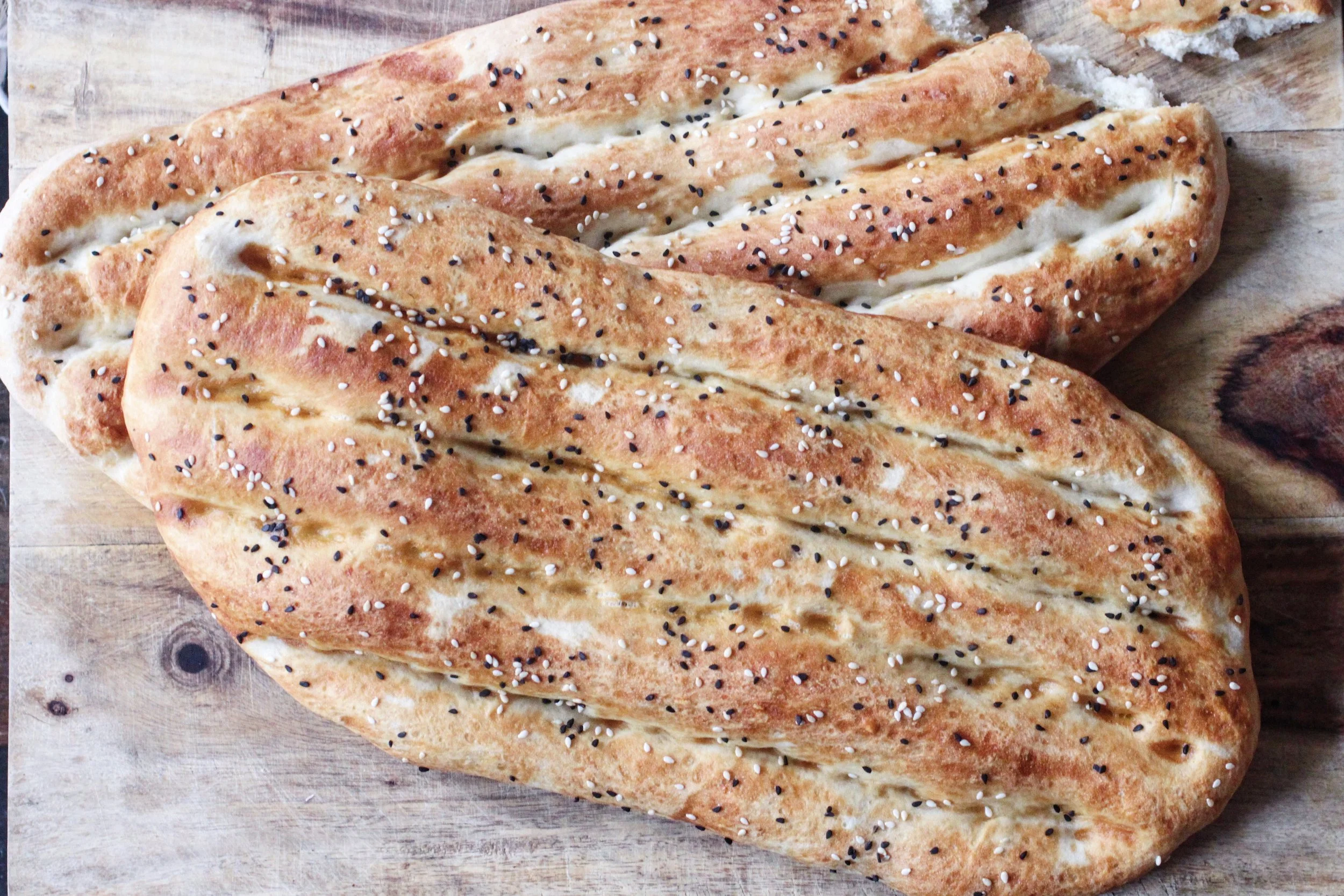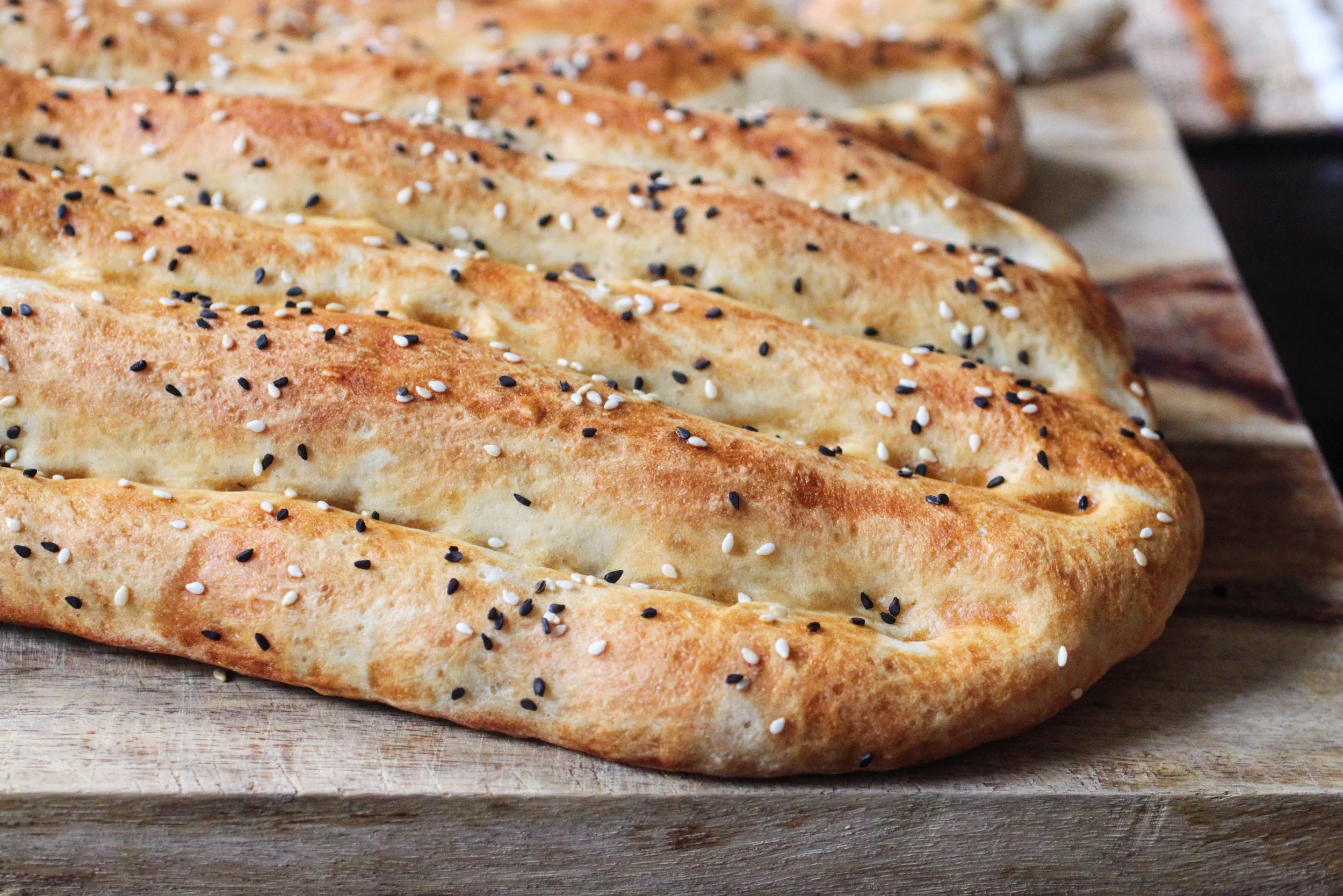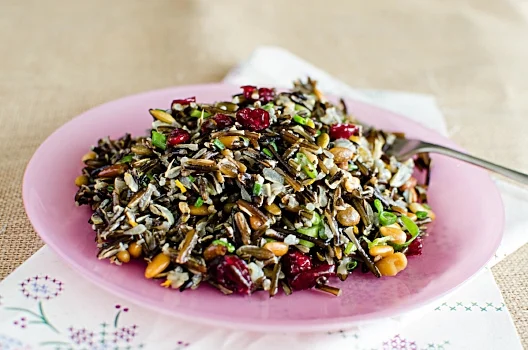NAN-E BARBARI
I know - I've been going a bit bread and baking crazy on here. But THIS! Nan-e barbari, more commonly known as Persian flatbread, is a very thick flatbread that is popular in Iran. It is similar to Indian naan in shape and cooking technique, but is pretty unique and spectacular with it's grooves and coating of nigella and sesame seeds. I call it "statement bread".
Nan-e barbari requires 2 rises but literally cooks within 20 minutes on a well heated stone in the oven. There is also a paste that the bread is coated with called a roomal that gives the bread its crispy texture and golden brown color. This flatbread is most commonly eaten as a breakfast bread, served with a type of feta cheese, clotted cream or jam, but I love it fresh out of the oven with dinner - to scoop up a curry or stew or hug some grilled kebabs.
I use a preheated pizza stone to bake this, but you can also use a cookie sheet. Just know that you might not get as nice a crunch on the bottom of the flatbread.
Enjoy!
For the Dough:
1 packet active dry yeast
1 ¾ cup lukewarm water
2 teaspoons sugar
3 ¾ - 4 cups bread flour (plus more for coating pizza peel)
2 1/2 teaspoons salt
For the Paste (Roomal):
2 teaspoons all-purpose flour
1/2 teaspoon baking soda
1/2 cup water
pinch of sugar
Garnish: nigella seeds and/or white sesame seeds
In the bowl of a mixer fitted with the dough hook attachment, add the yeast, water and sugar and let stand for 10 minutes until it begins to foam. If it doesn’t begin to foam at this point, your yeast may be bad and the dough may not rise properly. With the mixer on low, slowly add the bread flour and salt until a shaggy dough forms. Put the mixer on medium and let knead until a soft, smooth dough has formed (5 to 7 minutes). You may get a little sticking to the bottom - that’s ok! Remove the dough from the mixing bowl, form in to a ball and place in a lightly greased bowl to rise in a warm area, covered, for about an hour or until it doubles in size.
Once the dough has risen, punch the dough down and separate into two equal pieces. Shape each dough into a long oval. Place each oval on a parchment lined cookie sheet and cover with plastic wrap to allow to rise for another 30 - 45 minutes.
While the dough is on its second rise, preheat the oven to 450° F and allow the pizza stone to heat for 30 minutes or more on the bottom shelf.
You can also start making the roomal. In a small saucepan over medium heat, combine all of the roomal ingredients and bring to a light boil. Reduce heat to low and cook until the paste coats the back of your spoon and has deepened in color. Remove from heat and set aside.
If you have a pizza peel/paddle, lightly coat with flour and place one of the pieces of dough on it (you can also use the back of a cookie sheet or a cookie sheet that has no raised sides). Make sure the dough can easily slide off so you have no issues when transferring it to the hot pizza stone. Press down on the dough and release some of the air. Using the side of your pinky finger, gently press down the length of the dough to make the grooves, trying not to go all the way through the dough. Do this about 4-5 times. You can also go back over the grooves with your fingers if you want a deeper indent - up to you! Brush the dough all over with the roomal and sprinkle with the nigella seeds and/or sesame seeds.
Gently slide the bread on to the preheated pizza stone and cook in the oven for about 15 - 20 minutes until golden brown. While the first piece of dough is cooking, prepare the other half.
Barbari is best served warm, or at room temp.









